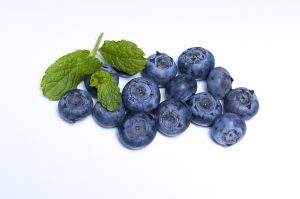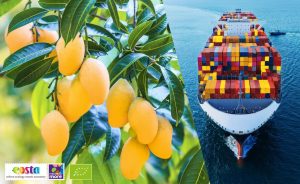Fruit Today magazine interviewed Rafael Domínguez, General Manager of Freshuelva, who also discussed the sector’s most pressing challenges: water availability, the use of plant protection products in line with other European countries, and the need for labor.
How is the berry campaign shaping up this season?
The campaign is marked by a 4% overall increase in berry cultivation areas, totaling 12,274 hectares. Among the various berries, raspberries stand out with a 9.5% increase in acreage, recovering 2022 levels after two years of decline. This growth is attributed to a successful previous campaign, during which Spanish raspberries were highly valued in the markets, while Moroccan raspberries faced difficulties. Strawberries are also growing, albeit more modestly, with a 2% increase.
Blueberries are in a phase of consolidation after several years of growth. This year, the area dedicated to blueberries increased by 4%, reaching 3,744 hectares. The slower growth in acreage compared to previous years is largely due to water limitations. In terms of volumes, stable production is expected, with sustained demand in European markets. This marks a more mature stage for this crop in Huelva.
What role does water availability play in the development of crops?
It is a determining factor. We continue to face a 25% reduction in irrigation allocations, as was the case last season, which greatly limits the expansion of cultivated areas. Unfortunately, the necessary investments in water infrastructure have not been made.
The situation is alarming because if we cannot consolidate irrigation systems, the sustainability of the sector is at risk—this sector generates around 100,000 direct jobs in Huelva. Progress has been stagnant regarding critical infrastructure projects, including the construction of the Alcolea dam and the works required for transferring water to the county from the Tinto-Odiel-Piedras river basin.
The only significant progress has been the agreement with Portugal to release water from the Guadiana River for a few months. However, this is insufficient. We still need dams to store water from torrential rains, which are becoming increasingly irregular due to climate change. Without these reserves, the situation will only worsen.
Plant protection products are another recurring issue. What are the sector’s main demands?
We demand equal conditions compared to other EU countries. For example, Italy and Portugal allow the use of plant protection products under exceptional authorization that are not permitted here, even for the same crops. This creates unfair competition, as our farmers cannot combat certain pests as effectively.
We are calling for unified regulations across the EU to avoid these disparities. Our request to the Ministry of Agriculture no longer focuses on practices in third countries; we are talking about inequalities within European countries themselves.
Labor shortages are another critical issue. How is this being managed?
This year, we have expanded origin-based hiring, incorporating workers from Morocco, Honduras, Colombia, Ecuador, and Guatemala. However, it remains challenging to find sufficient labor, particularly at the national level and from Eastern Europe.
This is why we emphasize the need for multi-year planning by the administration to ensure a stable contingent of workers.
Without solutions to the three issues mentioned—water, labor, and plant protection products—we face a challenging scenario that could affect thousands of families who depend on this sector.
RELATED NEWS: “We are concerned about the German recession”
International markets are also crucial for commercialization. How are they evolving?
The United Kingdom and Germany remain our main buyers. In both markets, demand for Spanish strawberries remains strong, although we are closely monitoring the effects of the economic recession, which could impact demand in both countries.
Regarding new markets, last year we conducted a pilot test with strawberries in Canada, which yielded good results. This year, we plan to repeat the experience and expand it to include blueberries, as this fruit travels better. However, bureaucracy and trade barriers continue to make accessing new markets a challenge.
What can you tell us about the availability of strawberry varieties?
In Huelva, we grow a wide diversity of strawberry varieties, many of them proprietary, tailored to different climatic conditions and market needs. Proprietary varieties from New Plant Material already account for one-third of total production.
This diversification allows us to guarantee production throughout the season. For example, we have early varieties that perform well in colder months like December and January, as well as others that extend production until June. Additionally, we cultivate specific varieties for markets like the UK, which demand particular characteristics in size and flavor.
This wide varietal range is key to maintaining our competitiveness in such a demanding sector.
How has the commercial campaign started?
Our start, coinciding with low production volumes, was particularly satisfactory during the Christmas season, yielding excellent results. However, following this period, colder days have temporarily slowed production. We know this is a temporary situation, and production is expected to increase significantly in the coming weeks.




















